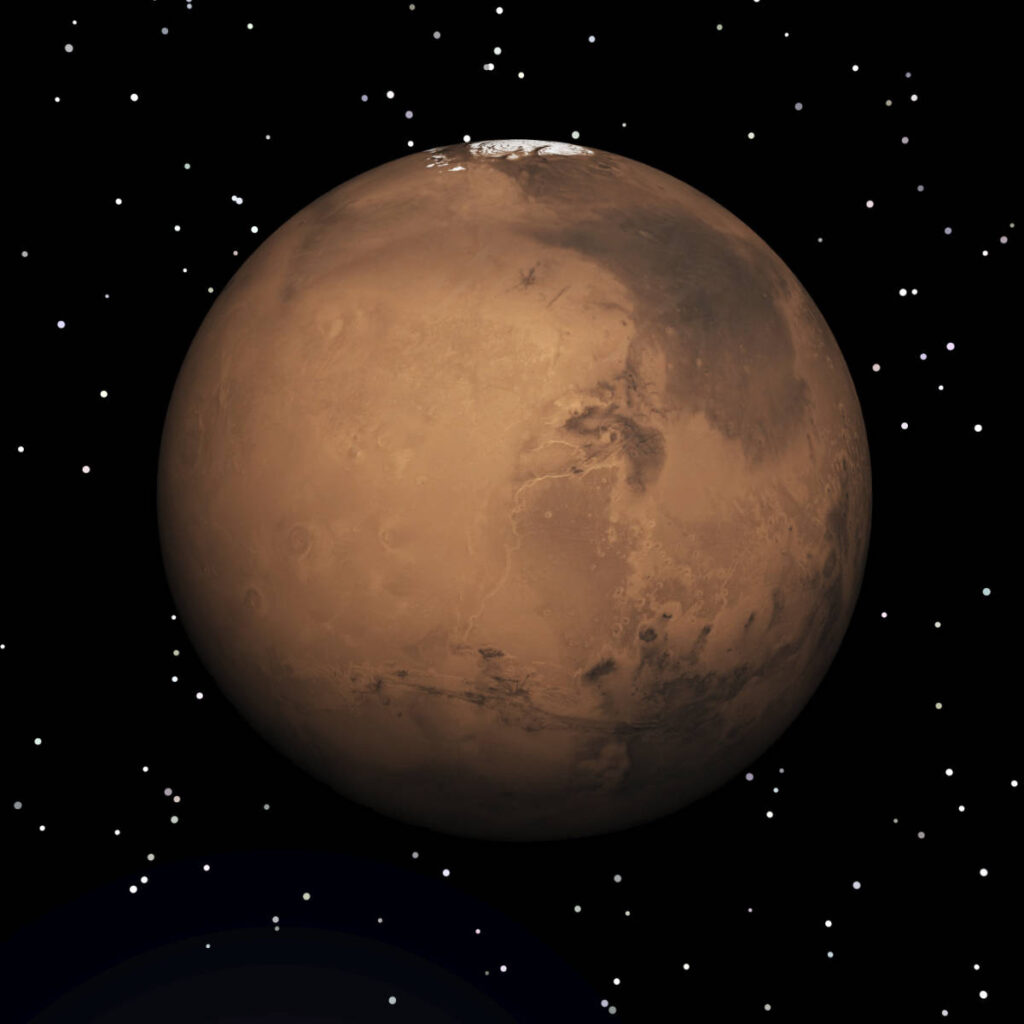Last Reviewed and Updated on June 21, 2022
The red planet has been a source of fascination for centuries, and its distinctive hue is one of the most striking features of our solar system. But why is Mars red? We’ll explore the reasons behind the color of Mars and also how that affected the naming of the planet.

The soil on Mars is rich with iron
The Martian soil is high in iron, and the surface is high in iron oxide which gives the planet its distinctive red color.
The red color of Mars is due to rusting
Understanding the color of Mars is easy if you think about the processes closer to home.
Let’s look at rusting. You most certainly had a chance to either see rust or even observe the process of rusting. Wherever you have iron or iron alloys exposed to oxygen and water, a chemical reaction called oxidation will occur. During this process, iron is converted to iron dioxide which has a reddish-brown flaky appearance.
One of the more common places where you see rust are car’s exhaust system as well as different parts of the body of the car. Trains. Railroad tracks. Old nails and tools…
Since Mars has a lot of iron in the soil and there are oxygen and vapors of water in its atmosphere all conditions for rusting are met. Why is Mars red? Now you know!
The red planet got its name from the Roman god of war, Mars.
Mars was named after the ancient Roman god of war. Ancient Greeks called the planet Ares, who is a god of war as well.
Both ancient Romans and Greeks took note of the reddish color of this celestial object and associated it with blood. A fitting name for a red planet.
Want to learn more about this fascinating planet? Read through our list of facts about the planet Mars.
